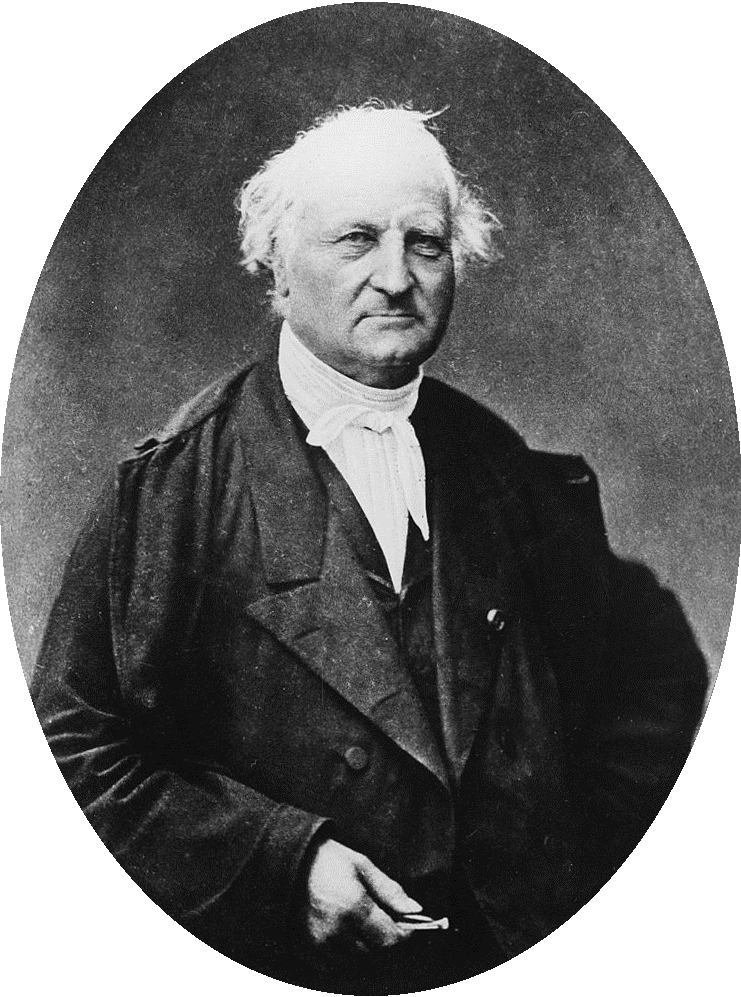|
Paul Friedländer (chemist)
Paul Friedländer (29 August 1857 in Königsberg – 4 September 1923 in Darmstadt) was a German chemist best known for his research on derivates of indigo (for example thioindigo) and isolation of Tyrian purple from ''Murex brandaris''. Life and work Paul Friedländer was born as son of Ludwig Friedländer in Königsberg in 1857. The chemist Carl Gräbe was a regular guest of his father; thus after finishing the gymnasium, Friedländer studied chemistry in Königsberg in the laboratories of Gräbe. Later he studied at the Strasbourg and Munich where he assisted Adolf von Baeyer. He received his PhD for the work with Baeyer and completed his habilitation in 1883. He left the well-equipped laboratories of Baeyer in Munich in 1884 to work in the small company K. Oehler in Offenbach. In 1888, he became professor at the University of Karlsruhe. During a visit at his parents in Königsberg, he got engaged and married Martha Kobligk; they had three daughters. Although he liked stay ... [...More Info...] [...Related Items...] OR: [Wikipedia] [Google] [Baidu] |
Königsberg
Königsberg (, ) was the historic Prussian city that is now Kaliningrad, Russia. Königsberg was founded in 1255 on the site of the ancient Old Prussian settlement ''Twangste'' by the Teutonic Knights during the Northern Crusades, and was named in honour of King Ottokar II of Bohemia. A Baltic port city, it successively became the capital of the Królewiec Voivodeship, the State of the Teutonic Order, the Duchy of Prussia and the provinces of East Prussia and Prussia. Königsberg remained the coronation city of the Prussian monarchy, though the capital was moved to Berlin in 1701. Between the thirteenth and the twentieth centuries, the inhabitants spoke predominantly German, but the multicultural city also had a profound influence upon the Lithuanian and Polish cultures. The city was a publishing center of Lutheran literature, including the first Polish translation of the New Testament, printed in the city in 1551, the first book in Lithuanian and the first Lutheran ca ... [...More Info...] [...Related Items...] OR: [Wikipedia] [Google] [Baidu] |
Carl Gräbe
Carl Gräbe (; 24 February 1841 – 19 January 1927) was a German industrial and academic chemist from Frankfurt am Main who held professorships in his field at Leipzig, Königsberg, and Geneva. He is known for the first synthesis of the economically important dye, alizarin, with Liebermann, and for contributing to the fundamental nomenclature of organic chemistry. Biography Gräbe was born in Frankfurt in 1841. He studied at a vocational high school in Frankfurt and Karlsruhe Polytechnic and in Heidelberg. Later he worked for the chemical company ''Meister Lucius und Brüning'' (today Hoechst AG). He supervised the production of Fuchsine and researched violet colorants made using iodine. The work with iodine resulted in eye problems, so he returned to academia. Carl Gräbe received his Ph.D. from the University of Heidelberg in 1862 under the supervision of Robert Wilhelm Bunsen. In 1868 he wrote his habilitation, and became a professor in Leipzig. Gräbe wa ... [...More Info...] [...Related Items...] OR: [Wikipedia] [Google] [Baidu] |
World War I
World War I (28 July 1914 11 November 1918), often abbreviated as WWI, was List of wars and anthropogenic disasters by death toll, one of the deadliest global conflicts in history. Belligerents included much of Europe, the Russian Empire, the United States, and the Ottoman Empire, with fighting occurring throughout Europe, the Middle East, Africa, the Pacific Ocean, Pacific, and parts of Asia. An estimated 9 million soldiers were killed in combat, plus another 23 million wounded, while 5 million civilians died as a result of military action, hunger, and disease. Millions more died in Genocides in history (World War I through World War II), genocides within the Ottoman Empire and in the Spanish flu, 1918 influenza pandemic, which was exacerbated by the movement of combatants during the war. Prior to 1914, the European great powers were divided between the Triple Entente (comprising French Third Republic, France, Russia, and British Empire, Britain) and the Triple A ... [...More Info...] [...Related Items...] OR: [Wikipedia] [Google] [Baidu] |
Cassella Farbwerke Mainkur Aktiengesellschaft
Cassella AG, formerly Leopold Cassella & Co. and Cassella Farbwerke Mainkur AG, commonly known as Cassella, was a German chemical and pharmaceutical company with headquarters in Frankfurt am Main. Founded in 1798 in the Frankfurt Jewish Alley by Leopold Cassella, Cassella operated as an independent company until 1995 and was one of many predecessor companies of today's Sanofi. Its main products were dyes, drugs, cosmetics and various other chemical products. From 1949 Cassella focused increasingly on pharmaceuticals and cosmetics rather than its former primary focus, dyes. Much of its history is closely associated with the Gans family, a prominent family of industrialists and philanthropists and former owners of Cassella. History The company was founded as a spice store inside the Frankfurt Jewish Alley in 1798 by the Jewish businessman Leopold Cassella and his brother-in-law Isaac Elias Reiss, and was originally named ''Cassel & Reiss''. In its early years, the company foc ... [...More Info...] [...Related Items...] OR: [Wikipedia] [Google] [Baidu] |
Höchst (Frankfurt Am Main)
Höchst ( or ) is a quarter of Frankfurt am Main, Germany. It is part of the ''Ortsbezirk West''. Höchst am Main was annexed by Frankfurt am Main in 1928, at the same time as Sindlingen, Unterliederbach and Zeilsheim. Höchst is situated 10 km west of downtown Frankfurt on the north bank of the Main river at the Nidda River estuary. The well-preserved old city has been under the ''Denkmalschutz'' protection law since 1972. An important cultural event is the folklore festival, the ''Höchster Schloßfest'', that brings many visitors to Höchst. It begins in the middle of June and last four weeks. It includes a festival in the old city, fireworks, and a jazz festival in the castle. In Höchst there is the Friedrich-Dessauer-Gymnasium, a sixth form '' Gymnasium''. History Middle Ages Höchst is first mentioned in 790 as Hostat (meaning high site or high place). The name has nothing to do with the Hostato Saga regarding the Knight Hostato, who after being the only one ... [...More Info...] [...Related Items...] OR: [Wikipedia] [Google] [Baidu] |
Bromine
Bromine is a chemical element with the symbol Br and atomic number 35. It is the third-lightest element in group 17 of the periodic table (halogens) and is a volatile red-brown liquid at room temperature that evaporates readily to form a similarly coloured vapour. Its properties are intermediate between those of chlorine and iodine. Isolated independently by two chemists, Carl Jacob Löwig (in 1825) and Antoine Jérôme Balard (in 1826), its name was derived from the Ancient Greek (bromos) meaning "stench", referring to its sharp and pungent smell. Elemental bromine is very reactive and thus does not occur as a native element in nature but it occurs in colourless soluble crystalline mineral halide salts, analogous to table salt. In fact, bromine and all the halogens are so reactive that they form bonds in pairs—never in single atoms. While it is rather rare in the Earth's crust, the high solubility of the bromide ion (Br) has caused its accumulation in the oceans. Commer ... [...More Info...] [...Related Items...] OR: [Wikipedia] [Google] [Baidu] |
Sulfur
Sulfur (or sulphur in British English) is a chemical element with the symbol S and atomic number 16. It is abundant, multivalent and nonmetallic. Under normal conditions, sulfur atoms form cyclic octatomic molecules with a chemical formula S8. Elemental sulfur is a bright yellow, crystalline solid at room temperature. Sulfur is the tenth most abundant element by mass in the universe and the fifth most on Earth. Though sometimes found in pure, native form, sulfur on Earth usually occurs as sulfide and sulfate minerals. Being abundant in native form, sulfur was known in ancient times, being mentioned for its uses in ancient India, ancient Greece, China, and ancient Egypt. Historically and in literature sulfur is also called brimstone, which means "burning stone". Today, almost all elemental sulfur is produced as a byproduct of removing sulfur-containing contaminants from natural gas and petroleum.. Downloahere The greatest commercial use of the element is the producti ... [...More Info...] [...Related Items...] OR: [Wikipedia] [Google] [Baidu] |
Natural Dye
Natural dyes are dyes or colorants derived from plants, invertebrates, or minerals. The majority of natural dyes are vegetable dyes from plant sources—roots, berries, bark, leaves, and wood—and other biological sources such as fungi. Archaeologists have found evidence of textile dyeing dating back to the Neolithic period. In China, dyeing with plants, barks and insects has been traced back more than 5,000 years.Goodwin (1982), p. 11. The essential process of dyeing changed little over time. Typically, the dye material is put in a pot of water and heated to extract the dye compounds into solution with the water. Then the textiles to be dyed are added to the pot, and held at heat until the desired color is achieved. Textile fibre may be dyed before spinning or weaving ("dyed in the wool"), after spinning ("yarn-dyed") or after weaving ("piece-dyed"). Many natural dyes require the use of substances called mordants to bind the dye to the textile fibres. Mordants (from the Latin ... [...More Info...] [...Related Items...] OR: [Wikipedia] [Google] [Baidu] |
Vienna
en, Viennese , iso_code = AT-9 , registration_plate = W , postal_code_type = Postal code , postal_code = , timezone = CET , utc_offset = +1 , timezone_DST = CEST , utc_offset_DST = +2 , blank_name = Vehicle registration , blank_info = W , blank1_name = GDP , blank1_info = € 96.5 billion (2020) , blank2_name = GDP per capita , blank2_info = € 50,400 (2020) , blank_name_sec1 = HDI (2019) , blank_info_sec1 = 0.947 · 1st of 9 , blank3_name = Seats in the Federal Council , blank3_info = , blank_name_sec2 = GeoTLD , blank_info_sec2 = .wien , website = , footnotes = , image_blank_emblem = Wien logo.svg , blank_emblem_size = Vienna ( ; german: Wien ; ... [...More Info...] [...Related Items...] OR: [Wikipedia] [Google] [Baidu] |
Haustellum Brandaris 000
''Haustellum'' is a genus of medium-sized sea snails, marine gastropod mollusks in the family Muricidae, the murex snails or rock snails. Like many other genera within the Muricidae, the genus has been redefined several times. Ponder & Vokes (1988) and Vokes (1990) included American and Indo-Pacific species in ''Haustellum'', which differs from ''Murex'' sensu stricto by lacking a labral spine. Petuch (1994) introduced ''Vokesimurex'' for the American long-canalled ''Haustellum'' sensu Vokes (1990), such as '' Murex messorius'' Sowerby, 1841. Houart (1999) transferred 14 Indo-Pacific species and three subspecies of ''Haustellum'' in the genus ''Vokesimurex''. As currently defined, ''Haustellum'' is represented by eight to nine species. Members of ''Haustellum'' generally differ from those of ''Vokesimurex'' in having a globose and low-spired shape, a more rounded aperture, a smooth columella, a less deep anal notch, and no cord spine. Species Species within the genus ''Haus ... [...More Info...] [...Related Items...] OR: [Wikipedia] [Google] [Baidu] |
University Of Karlsruhe
The Karlsruhe Institute of Technology (KIT; german: Karlsruher Institut für Technologie) is a public research university in Karlsruhe, Germany. The institute is a national research center of the Helmholtz Association. KIT was created in 2009 when the University of Karlsruhe (), founded in 1825 as a public research university and also known as the "Fridericiana", merged with the Karlsruhe Research Center (), which had originally been established in 1956 as a national nuclear research center (, or KfK). KIT is a member of the TU9, an incorporated society of the largest and most notable German institutes of technology.TU9 As part of the German Universities Excellence Initiative KIT was one of three universities which were awarded excellence status in 2006. In the following "German Excellence Strategy" KIT was awarded as one of eleven "Excellence Universities" in 2019. KIT is among the leading institute of technology, technical universities in Germany Germany, officiall ... [...More Info...] [...Related Items...] OR: [Wikipedia] [Google] [Baidu] |

.jpg)





